From 2011 (C300) till last week (C500 Mark II). Canon has earned some decent experience (and history) on manufacturing cinema cameras. Many of them were successful in penetrating the professional cinema market, yet some of them failed to gain traction. Nevertheless, it’s time to make a summary of the Canon Cinema EOS line.
It all began in 2011 when Canon has decided to focus on motion video instead of just producing still video cameras with some motion video capabilities. The EOS Cinema’s first member of the family was introduced in late 2011 with the Canon EOS C300 and followed by the Canon EOS C500 and Canon EOS 1D C in early 2012. We didn’t include the 1D in this article since this model was dedicated to stills rather than video. Don’t get me wrong. The 1D is a great camera that produces stunning images straight of the box. However, it’s defined as a still camera that shoots video, while we focus on true motion picture Canon’s solution.
2011: Canon EOS C300
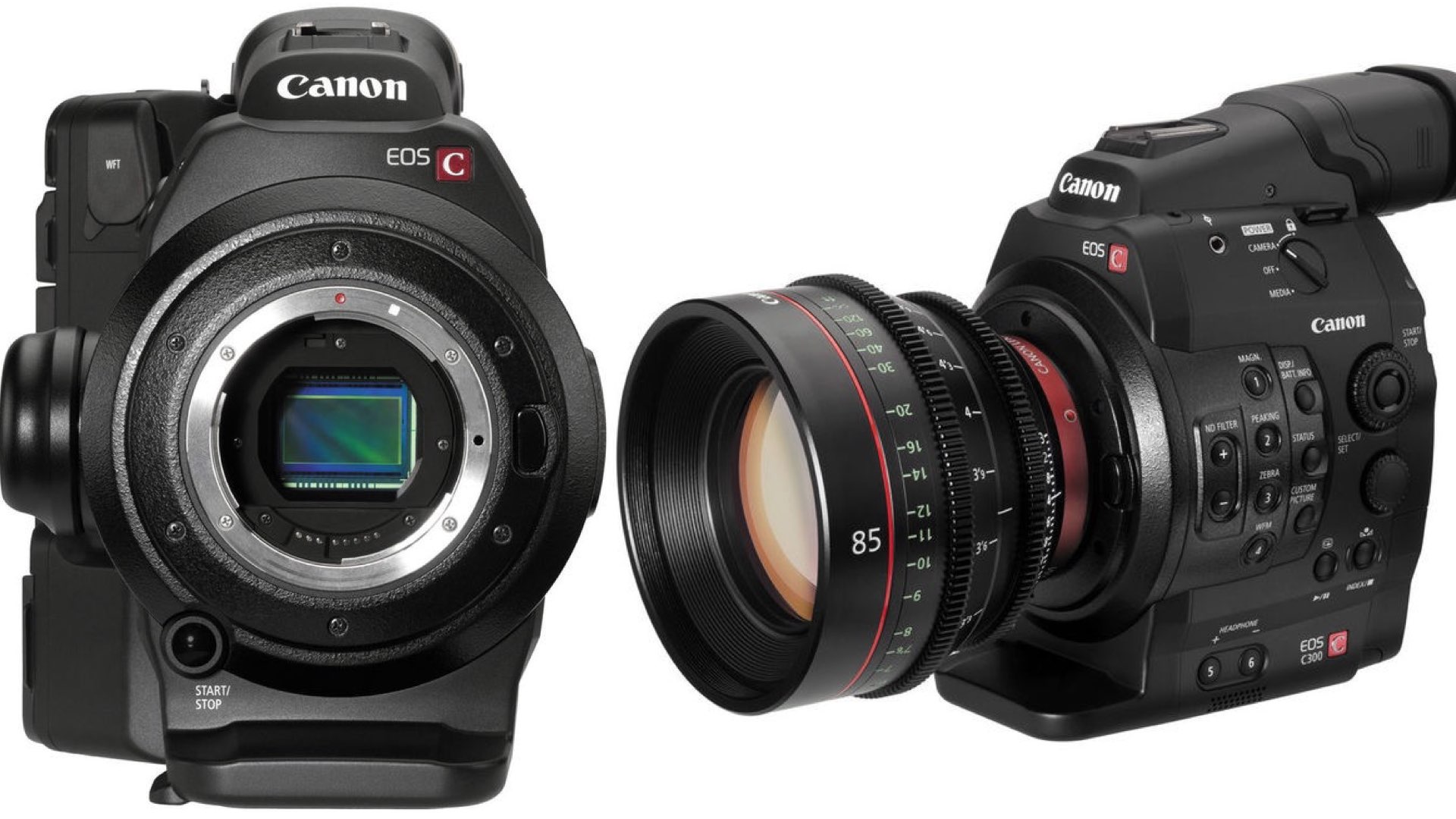
The EOS C300 is the first digital cinema camera in the Cinema EOS range. Canon announced it on November 3, 2011. The C300 features Super 35 sensor, Canon XF Codec – 4:2:2, Canon Log Gamma, and Full HD resolution. Back then, the Modular Design (removable grip & monitor) was one of the main characteristics of using this structure in cinema applications and productions. The model was defined as a pure innovation since it allowed differentiation from the DSLR products. Canon claimed that the EOS C300 featured enhanced signal processing to minimize rolling shutter. The model also owned (and still owns) some other capabilities that are essential when shooting videos. Furthermore, this model was dust-proof and splash-proof design to meet the robustness of the DSLR.
2012: Canon EOS C500
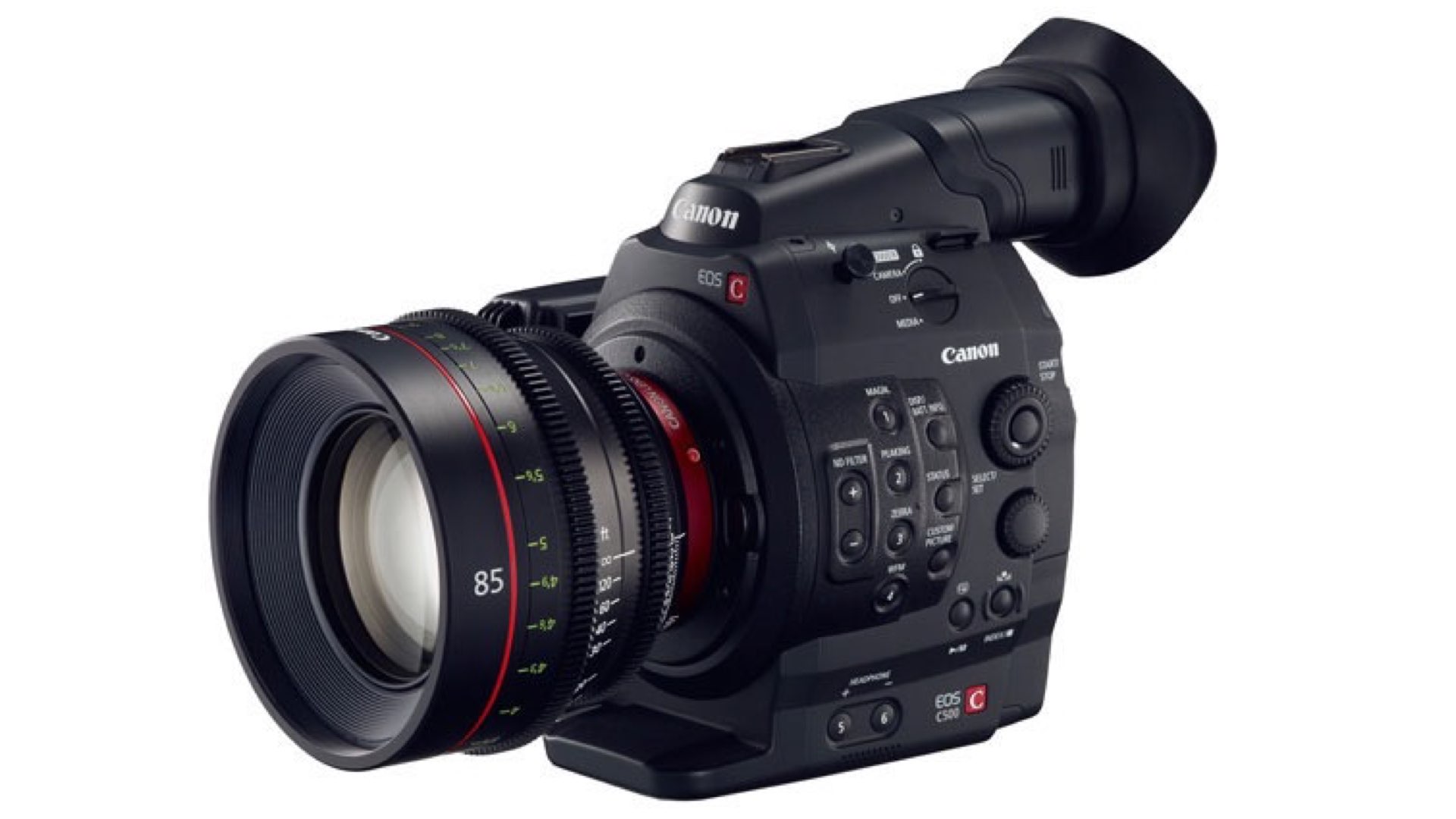
The EOS C500 was released in August 2012. This Super 35 camera was the second to form part of the Canon Cinema EOS line, complementing the previous Canon EOS C300. Notable new features compared to the previous camera were the addition of 4K video capture and the ability to record RAW (up to120fps) which was delivered to external recording systems (not internal). This model was supposed to be utilized by high-end production. However, it didn’t get there since there were better alternatives for the price and capabilities.
2012: Canon EOS C100
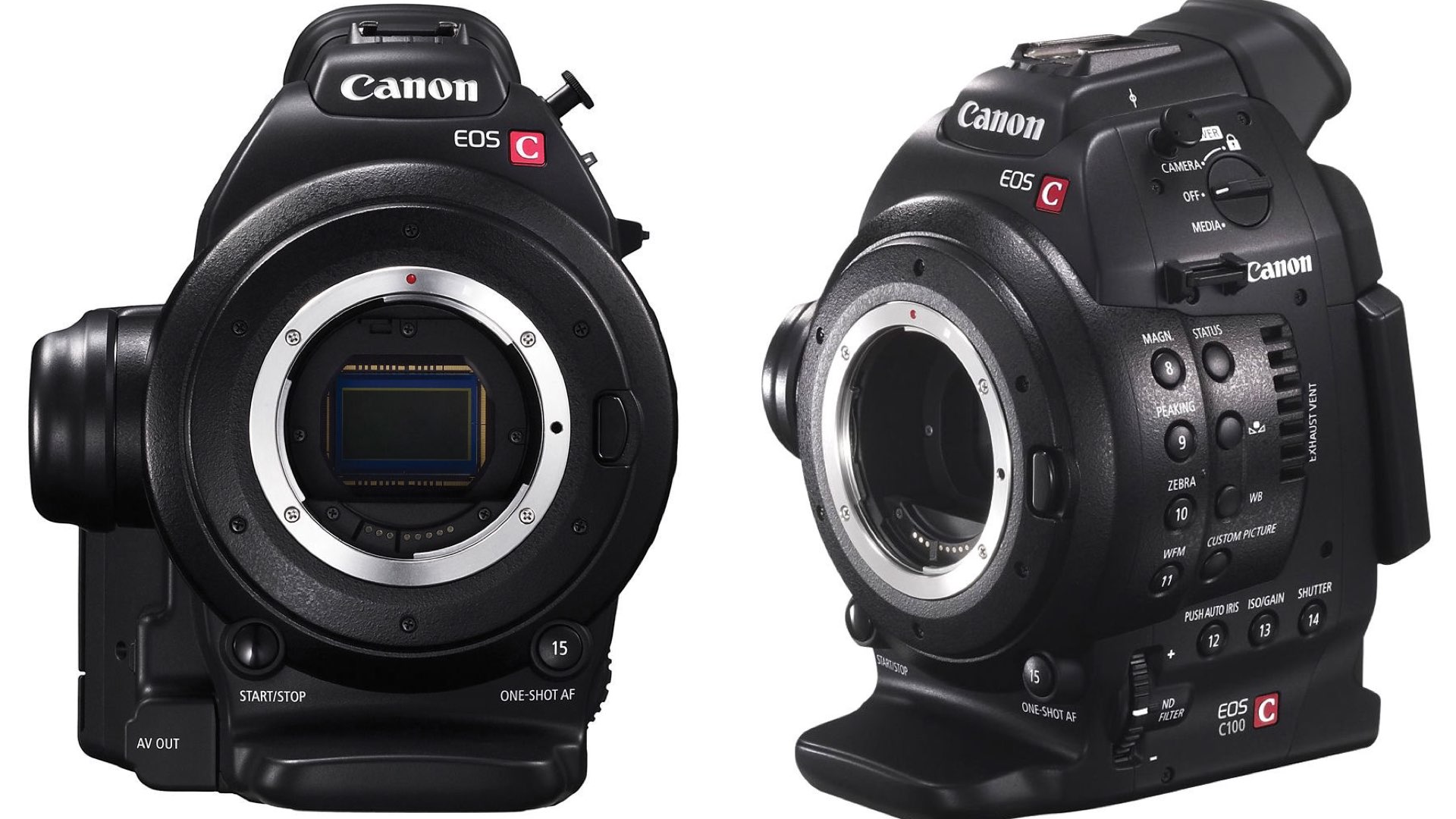
The EOS C100 was announced in 2012. It was the third camera from the Canon Cinema EOS line to be released and was defined as the budget-friendly option in the range, being less expensive than both the EOS C300 and EOS C500. The C300 is a Super 35 camera that shoots maximum resolution of Full HD. The camera allows to record 4:2:2 video with embedded timecode via the HDMI output. The C100 still can be purchased for $2,000. This camera was (and still is) a great alternative for junior filmmakers and constitutes entry-level camera for the EOS Cinema line.
2014: Canon EOS C100 Mark II
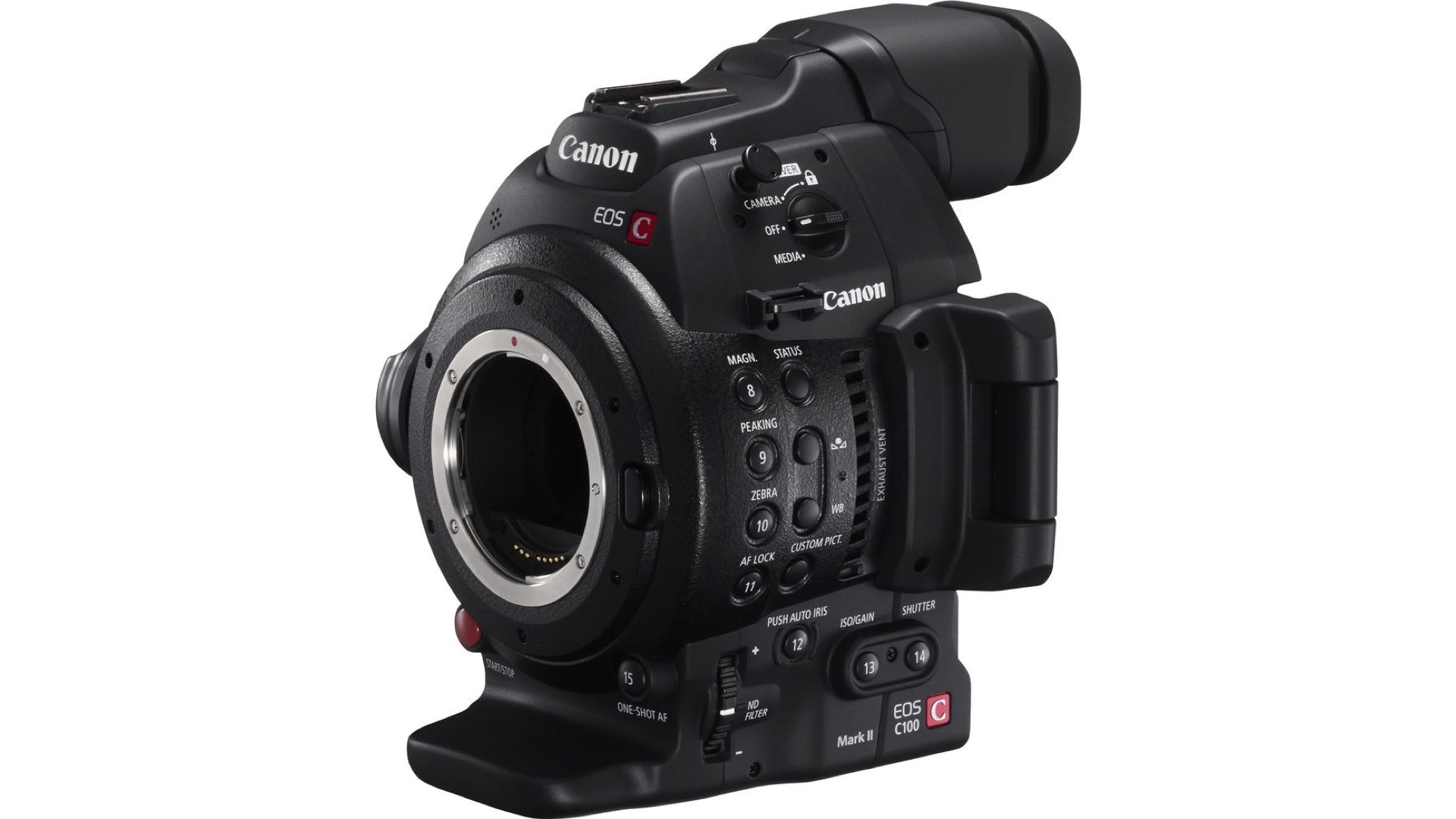
The C100 Mark II is Canon’s updated version of the C100. The Mark II also adds a variety of upgraded features, including a built-In Dual Pixel CMOS AF, face detection AF, MP4 recording and additional frame rates in AVCHD. The camera can be purchased for $3,000.
2015: Canon EOS C300 Mark II
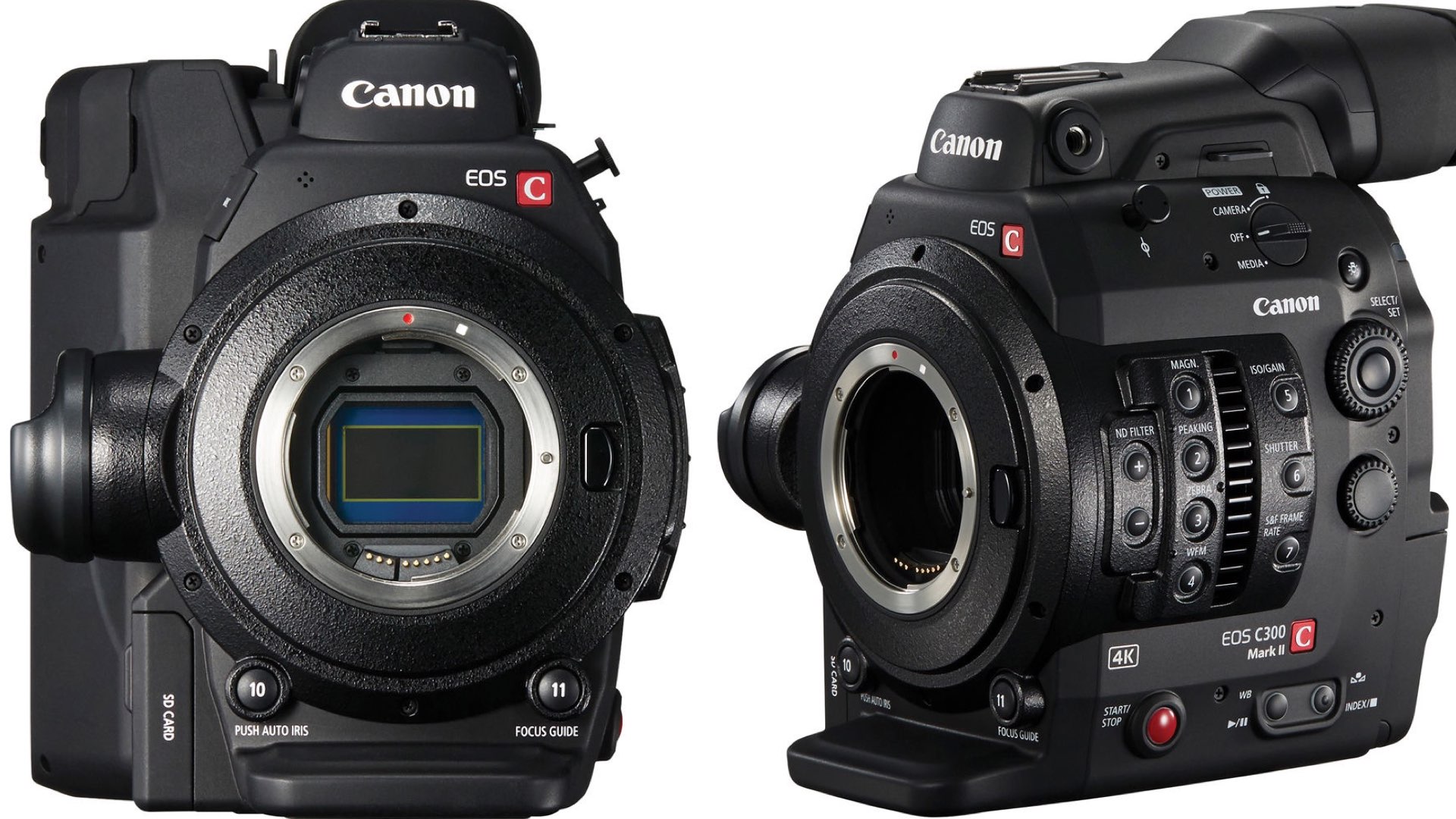
The C300 Mark II is Canon’s update to its first-generation cinema camera, the Canon C300. The C300 Mark II features a better sensor (compared to previous models) with wider dynamic range, 4K XF AVC Codec, which is an H.264 format wrapped in the widely-supported MXF wrapper. The C300 was familiar with its robustness, due to the cooling mechanism through a discrete pathway that keeps dust particles away from sensitive components. This model can be purchased for $9,000. The C300 Mark II was known as a broadcasting workhorse and was utilized very well by documentary filmmakers.
2016: Canon EOS C700
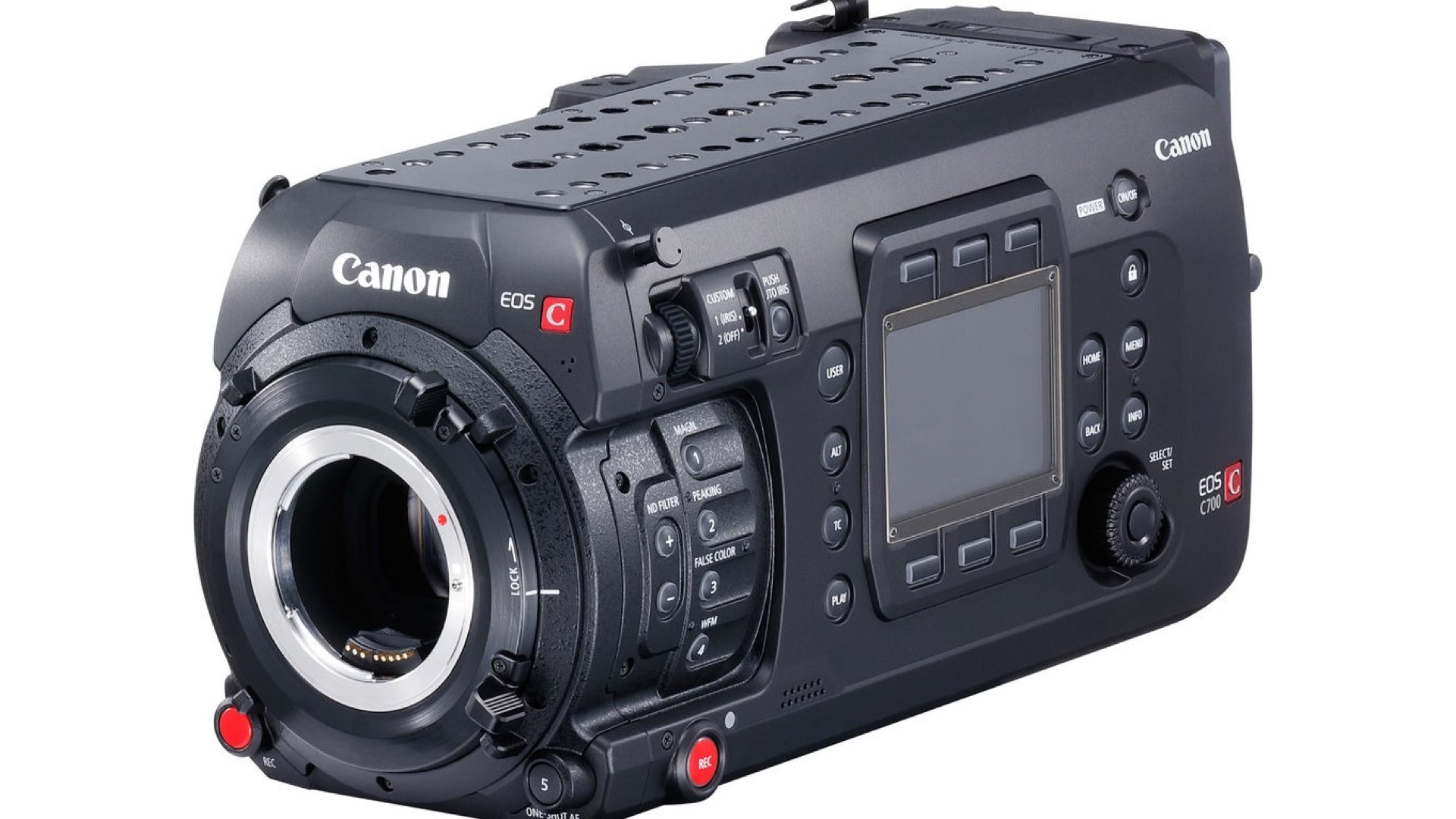
Canon defines the first C700 as their cinema-grade production-ready form factor camera. The first version of the C700 features a new Super 35 4.5K CMOS image sensor that delivers a wider dynamic range (15 stops as claimed by Canon). Also, the camera features Apple PreRes recording. However, RAW recording is another possibility (up to 120 fps) only via the Codex Digital Recorder. The price of the C700 is $28,000, after a vast price reduction performed lately by Canon.
2017: Canon EOS C700 Full Frame
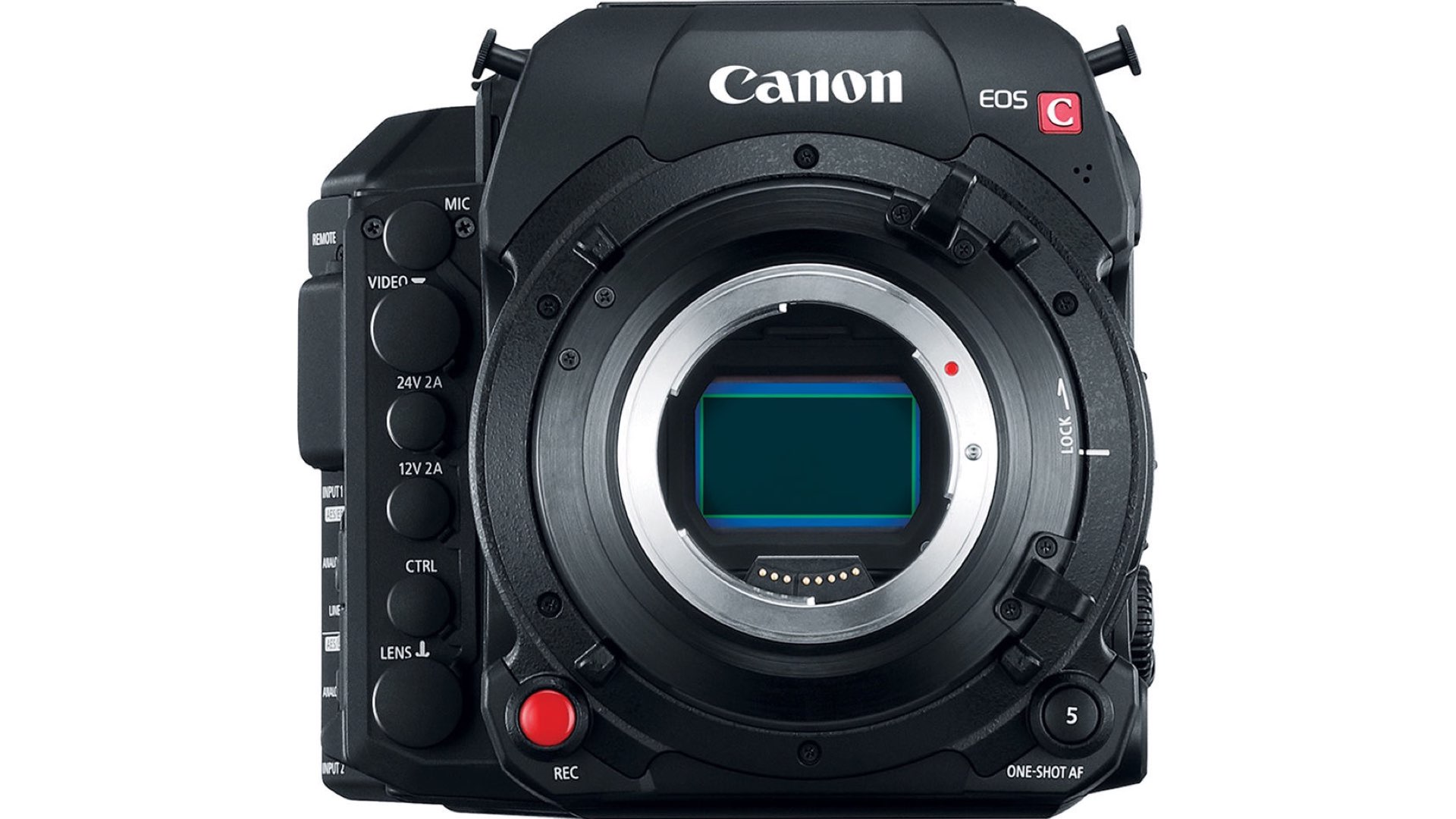
One year after the announcement of the C700, Canon unveiled the C700 FF (Full Frame), which is the same model and feature-set like the C700, but with 5.9K Full-Frame CMOS Sensor. Take a look at the picture below to explore the difference between the size of the sensors (FF vs. Super 35).
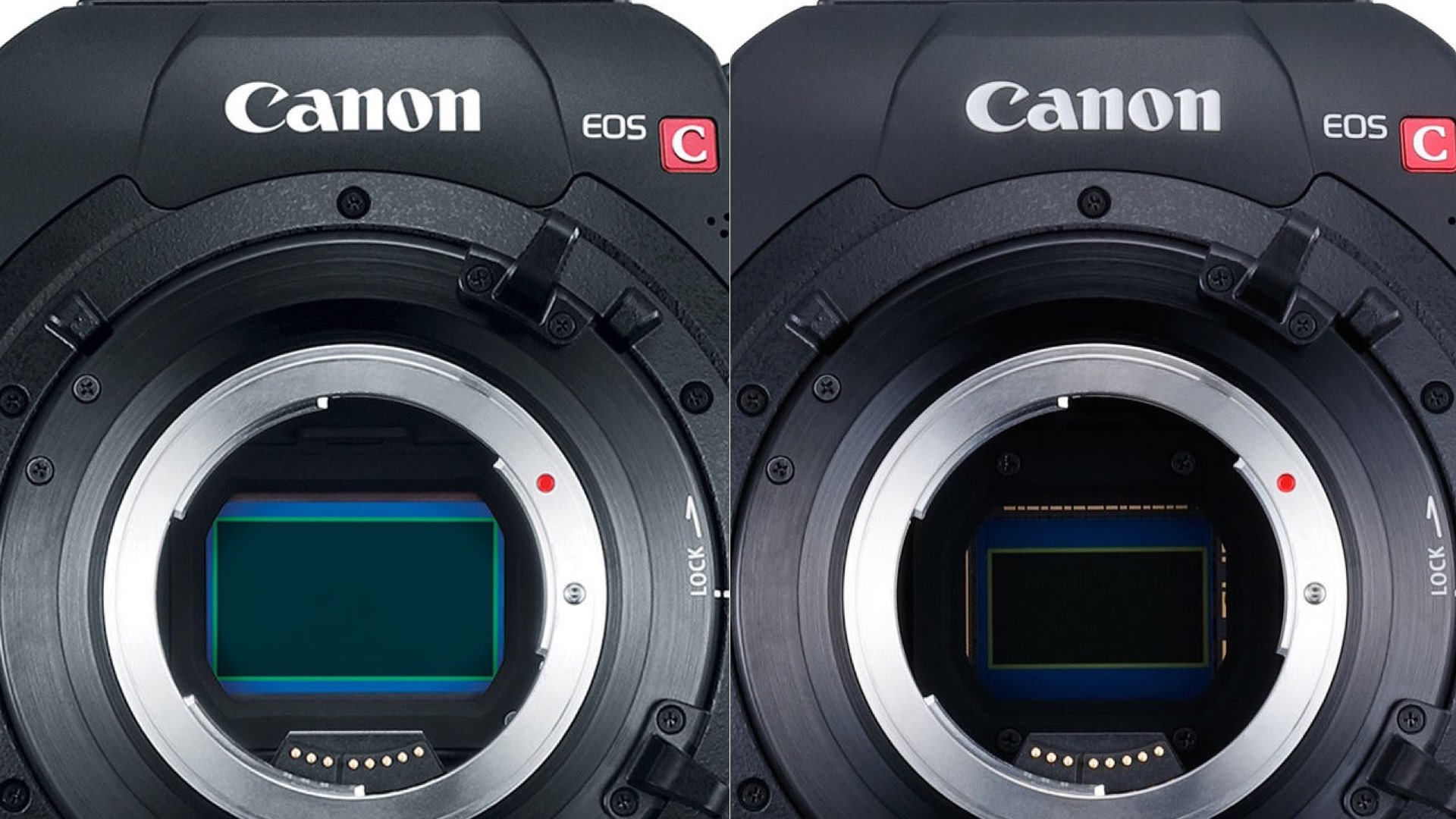
Additionally, there was (and still is) the option to upgrade the C700 sensor to FF. This sensor upgrade costs $5,000, and thus the price of the C700 FF is $33,000.
2017: Canon EOS C200
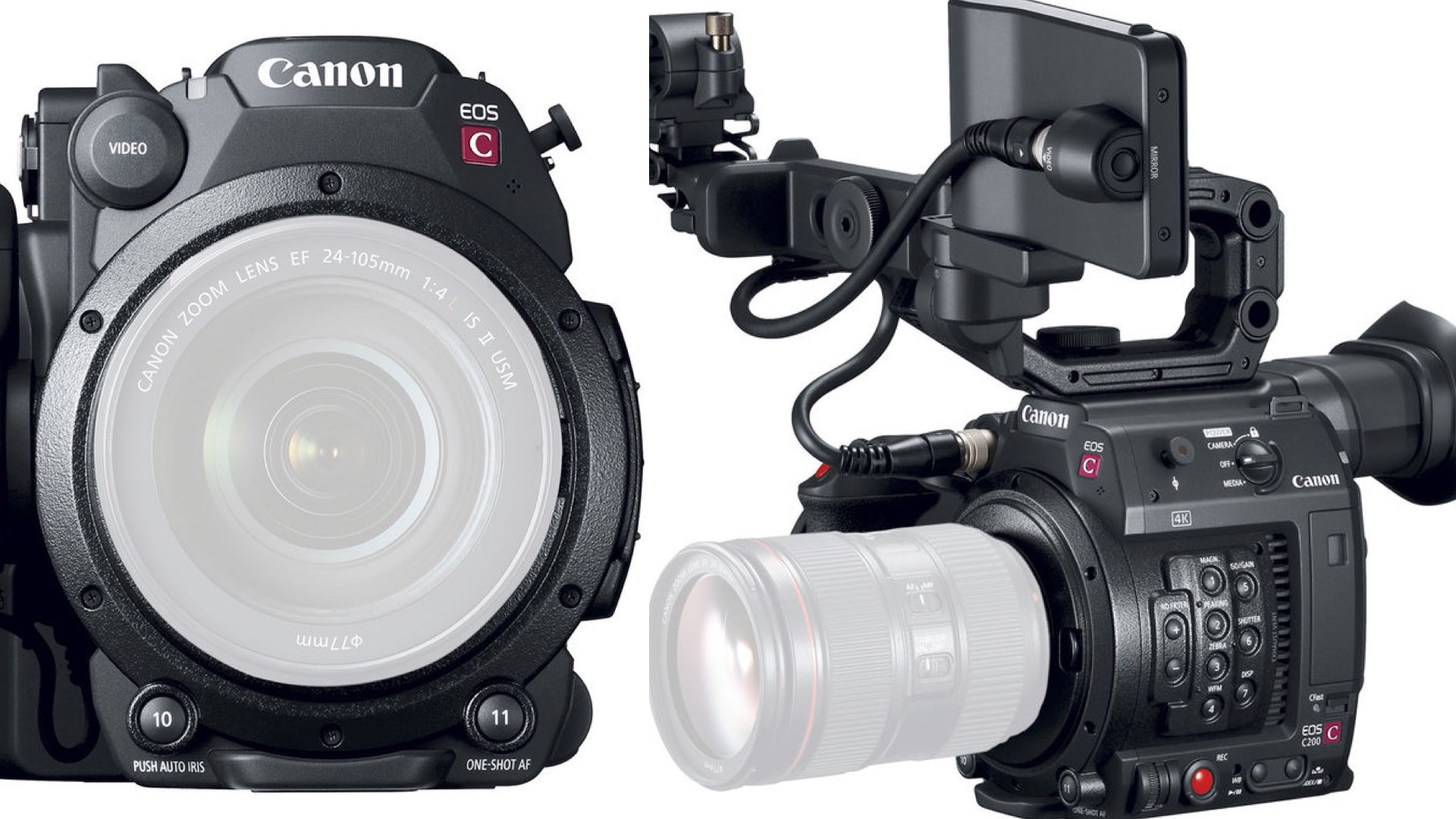
The C200 was announced by Canon at CineGear 2017. It is available in two versions: as the production-ready C200 with an EVF, LCD monitor, handle and handgrip accessories, and as the standalone camera body C200B for gimbal-style shooting (cheaper option). The EOS C200 records 4K RAW in Canon’s proprietary Cinema RAW Light video format, which is approximately 30%-50% the file size of their standard RAW format. That was the first time Cinema RAW Light was introduced. Also, Canon’s Dual Pixel CMOS AF can be achieved via the touch-LCD monitor attached to the C200, which makes the focus pulling much more efficient process, especially in one-shooter scenarios. The C200 underwent price reduction as well, and now can be purchased for $6,500.
2019: Canon EOS C500 Mark II
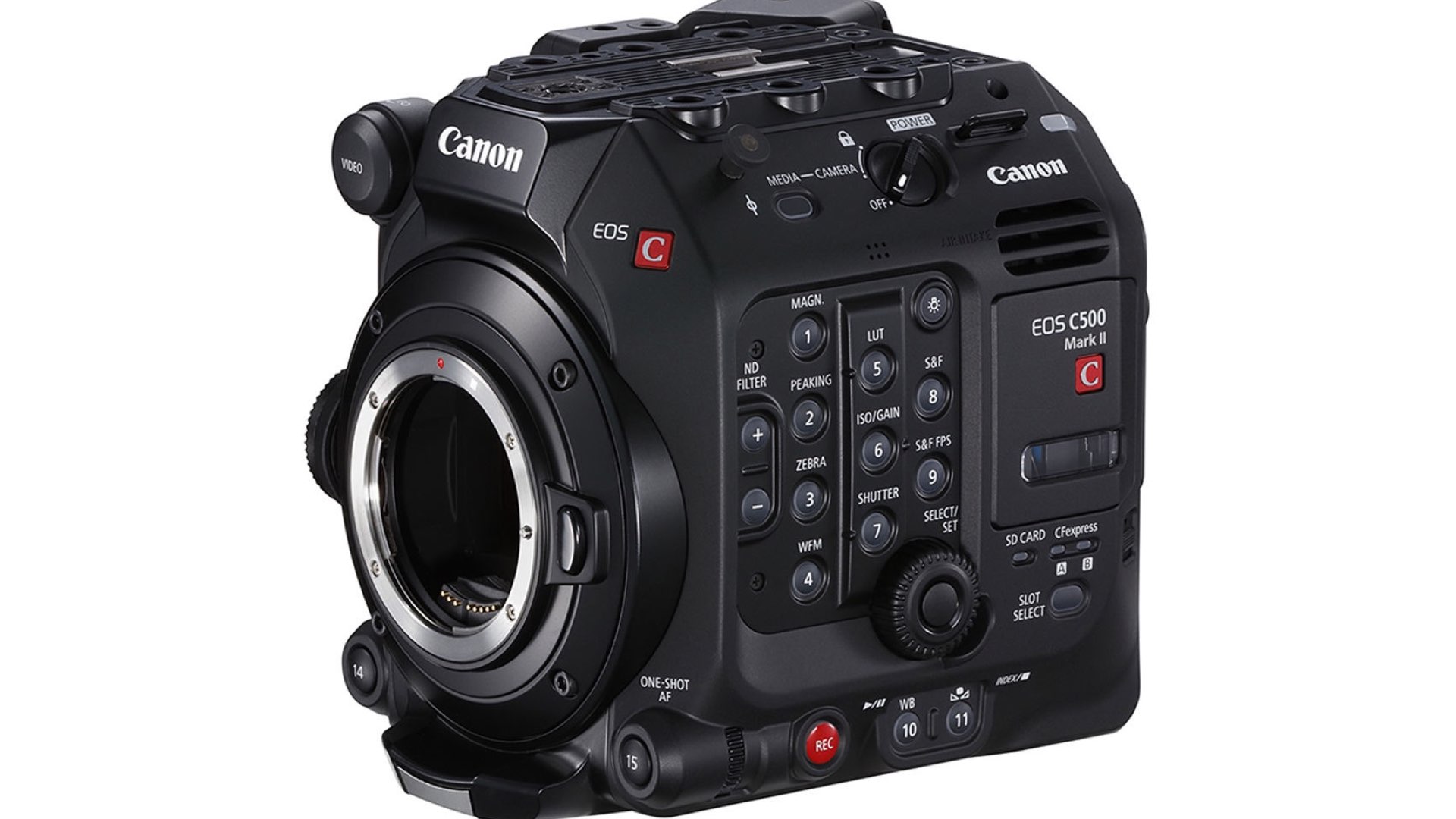
Last but not least, is the C500 Mark II. The recent announcement was made last week. Canon introduced a fascinating camera, although it’s probably going to cannibalize the C700. The C500 Mark II features a Full-Frame CMOS sensor with an effective 18.69MP resolution and 15 stops of DR (claimed by Canon). The C500 Mark II is capable of 5.9K output in full-frame. Furthermore, it features an interchangeable lens mount system, allowing you to swap out the mount by yourself without the need to send it to Canon’s labs. An important achievement is the high-speed DIGIC DV 7 processor that enables the camera to simultaneously record internally 4K proxy files as XF-AVC 10-bit and 5.9K Cinema RAW Light to internal CFexpress cards. Also, the design of the C500 Mark II is based on the idea of modularity that easily can be employed on a professional production. Regarding price, the EOS C500 Mark II costs $16,000.
From C300 to C500 Mark II: The Chart
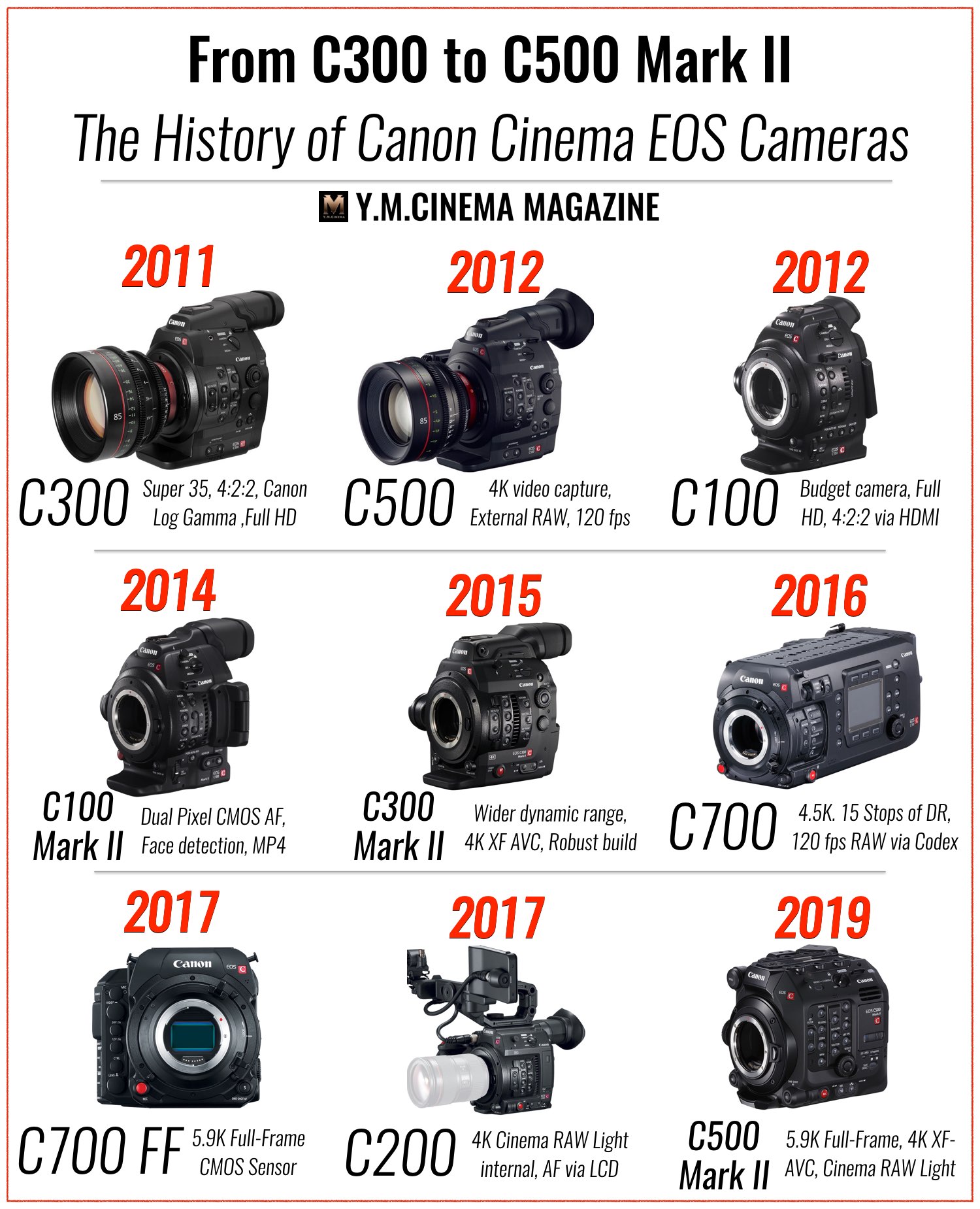
The future of Canon Cinema
First and foremost, we have to see an entire video that was shot on the C500 Mark II, so we can judge by comparing it to the C700, and other competitors like RED and ARRI. Also, I assume that the C500 Mark II will cannibalize the C700FF, so we are going to see some significant price reduction in this model. Note that according to Canon, the C500 Mark II is not a replacement to the C700 since the last is dedicated to a real RAW workflow for high-end productions. Also, bear in mind that the C500 Mark II is an expensive camera (above the $10,000 “psychological” price-line), but no worries. The cinema market is fully loaded with alternative, solution, and products, which means that the price reductions are on the horizon.


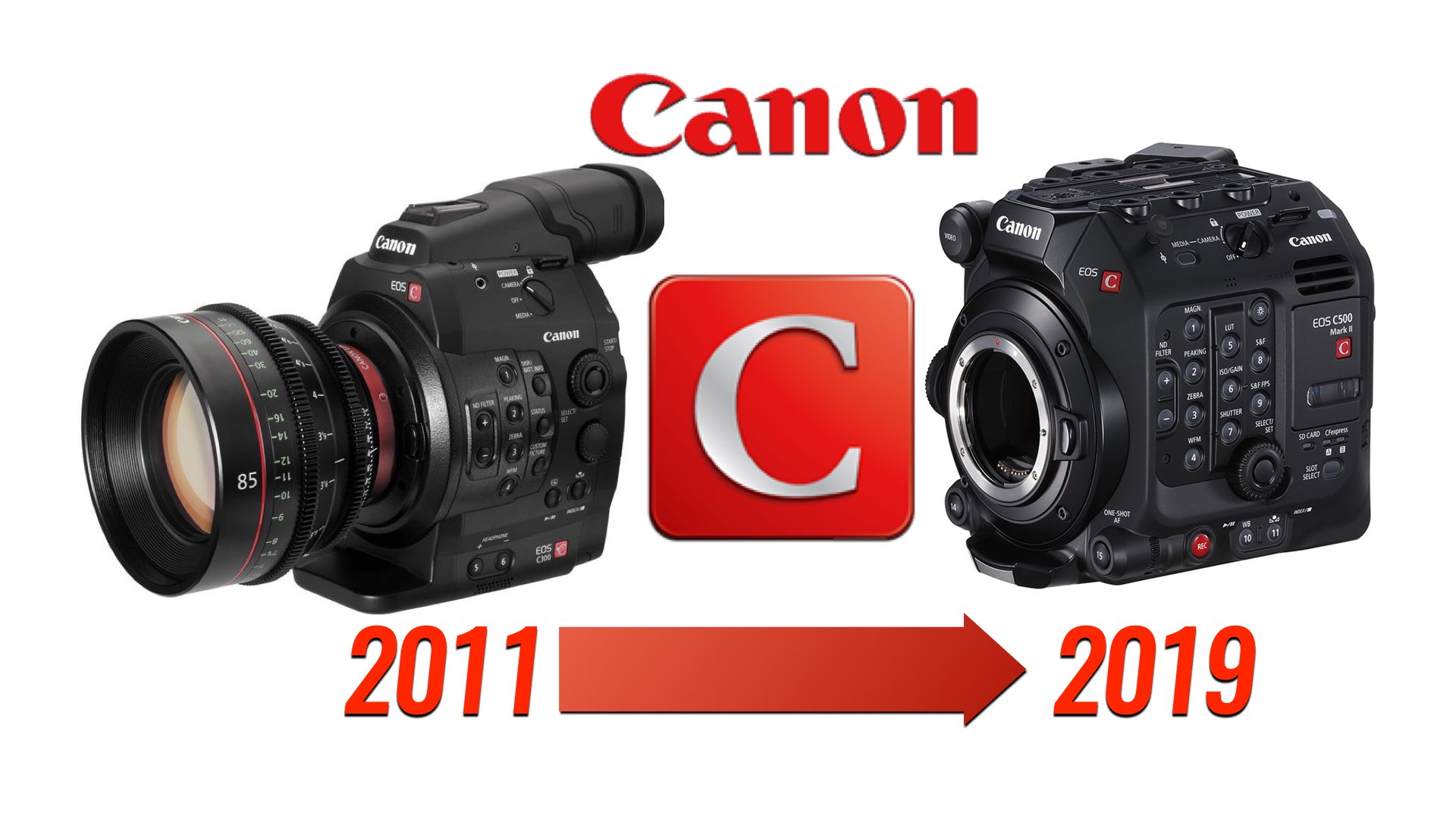
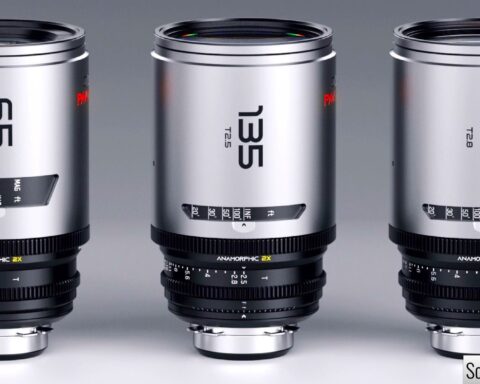
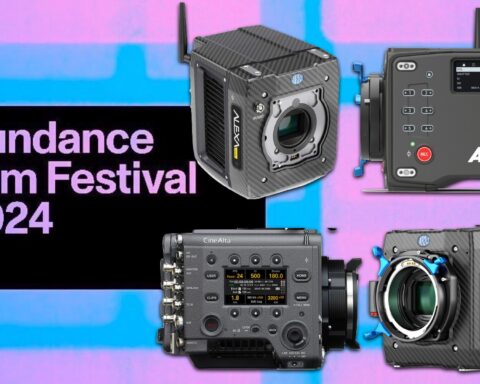
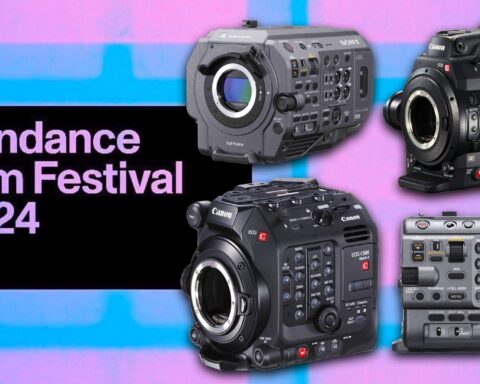
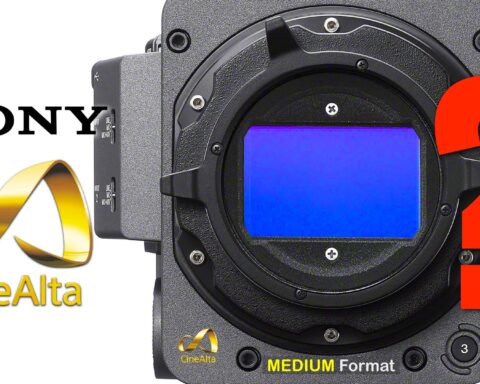
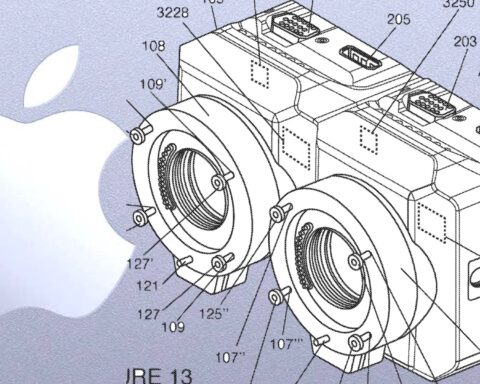
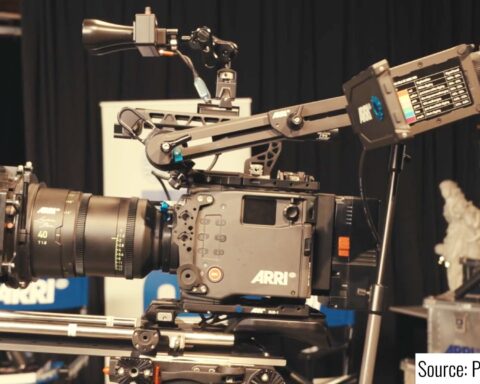

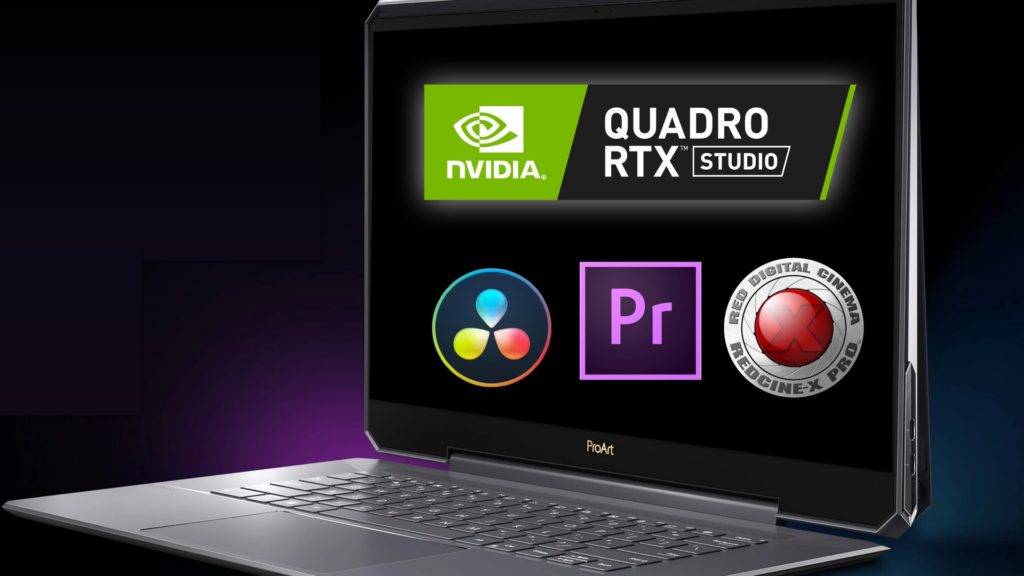
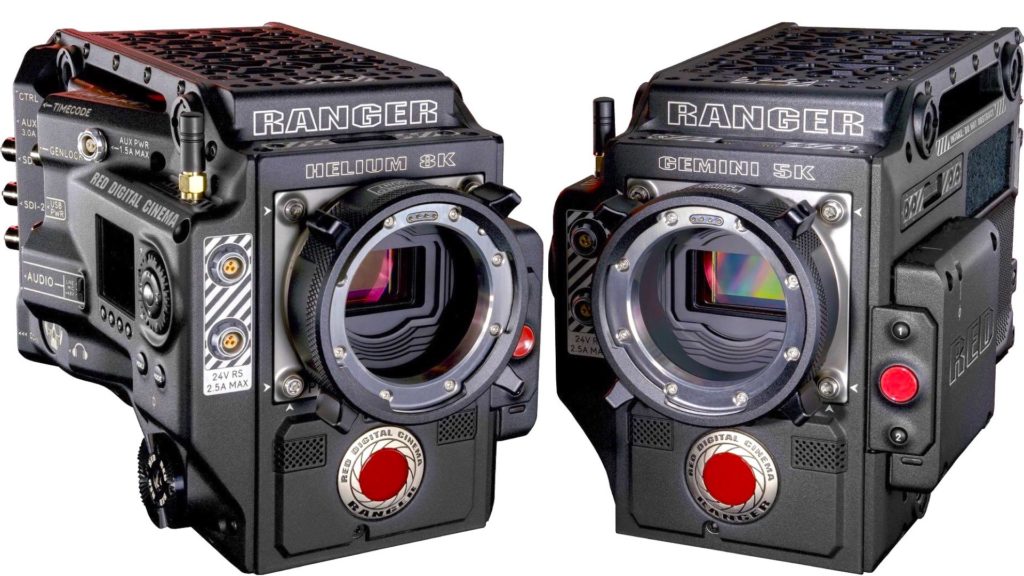





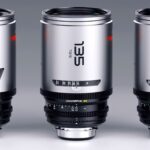

It’s been a fun ride, and it’s still going.
In terms of the new C500 Mark II, guess it makes sense they’re going to CFexpress media cards and I applaud progress, but makes me realize my days with all my CFast cards are numbered.
Also, pretty interesting/nice that the price of a C500 Mark II at the end of 2019 is basically the same price (if I recall) as a C300 Mark I in 2014.
[…] the C300 Mark II and the C700 series, as well as to be a complementary camera to the C700 series (go here to read about the history of Canon’s Cinema EOS). While we are getting teased by Canon about its new C500 Mark II, almost no footage has been […]